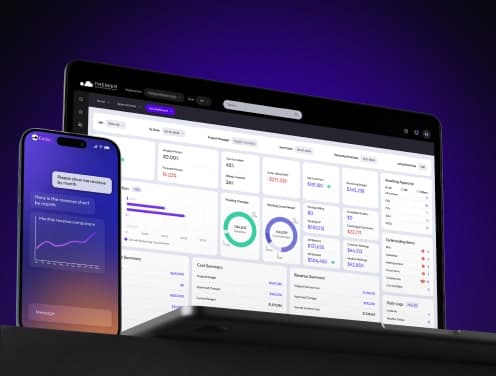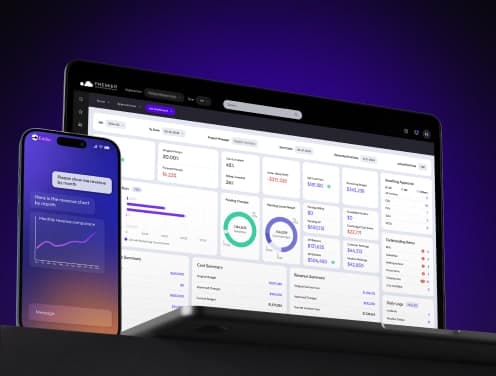
RFI in Construction: Find Out How The Process Works
With so many details in a project, every team member must be on the same page to understand and identify the errors with it. That’s why RFI in construction is an essential document, used to clarify the specifics besides the contract. Even with a contract, not every step taken is the same compared to what was agreed in the beginning, especially because deadlines may need to be extended, and costs may change. With proper documentation, all can be informed in advance, but do you know what RFI is and how to do it correctly? Keep reading to find out!
What is RFI in construction?
The RFI meaning in construction is simple: it is a formal process in which a contractor or project team member seeks clarification or additional information about a specific aspect of a construction project.
RFIs are typically submitted to the project owner, architect, or engineer and are used to address potential issues or gaps in the project plans, specifications, or drawings. The RFI allows the issuer to receive accurate information or clarification, ensuring that the construction process progresses smoothly and in accordance with the project requirements.
Besides additional data, a request for information in construction has the objective of verifying contract items, substituting materials/equipment unavailable or over budget, clarifying the design, and recognizing issues due to site problems, workers, available budget, and timeline.
Even with a simple definition, the process is complex because it involves every person on the project. It can be created and submitted in a few minutes or an hour, but the response can take longer, on an average of a week, for simple requests, and even longer, for long-term and intricate contracts.
An example of RFI in construction can be seen in these steps: a general contractor submits an RFI to clarify specifications about the site and the materials to the subcontractor. The response can be immediate with the data needed, but if there is no conclusive information, the document is sent to other members of the team. Once the response is appropriate, it is given back.
Difference between RFI and other requests
There is more than one type of request, so you may find more than just RFI in construction, including RFP, RFQ, and RFT. Each one of them is distinct in the following aspects:
- RFP: A request for proposal is used to describe the project or initiative and request bids for a qualified contractor, showing the qualifications to complete the job;
- RFQ: A request for quote or qualifications is sent to ask for pricing details of products and services, such as the vendor’s costs and payment terms. Usually, it is used during the procurement process;
- RFT: A request for tender is a formal invitation to submit offers on the pricing structure.

The creation of an RFI
An effective RFI in construction must start with a clear definition of the problem. Focus on only one per document to simplify the response, because sometimes one issue is handled easier than the other attached, while the time to answer may be longer.
More than describing the issue, use your ideas to provide different solutions. To clarify your explanation, use additional documents, like photographs and building plans (floor plan, site plan, and landscape drawings). With complete context, the general contractor can resolve the RFI without sending it to other parties.
The basic model of an RFI must include the project name, number and location, company, party information (name of the subcontractor, general contractor, or other responsible in charge of the submittal), request date, description, attachments, and signature.
Some variations include the cost impact and priority, rating as urgent or regular. A simple or more detailed document has to be split into two sections: the first for the issue and the second for the response. The answer also needs to be identified by the name of the professional, date, and attachments.
How to respond to it
The number of RFIs received by a general contractor may be huge, so it is necessary to maintain an efficient process to respond to them with a complete solution to avoid another document on the same topic. The secret to doing it properly is to read carefully and give a full answer. If help is needed, engineers, architects, and the client can be consulted.
How to improve the process
With so many RFIs to get through, optimization can be done with software, like Premier. It lets you organize them by filters, create tags to identify them quickly, start the task, save the progress, and return when time is available, as well as send them to others involved.
Our tool saves time while allowing the creation in seconds, using customized templates of RFI in construction with blocks to support documents, recommendations, and the impact on cost, time, and change requests. Once it is created, the dashboard filters by number, subject, priority (from low to high), type, section, data, and responsible person.
To remember pending reports, the system shows them in the dashboard and sends notifications through email when the response is completed. To improve the process and make the most of the software, our company can also define a specific procedure with a maximum time of response, a pattern for the template (to avoid a lack of information), and communicate when a new RFI is submitted.
Optimize this process with us!
RFI in construction is essential for communication during every step of the project. With Premier Construction Software, this task can be easily completed with personalized features for complete management. Read other articles on our blog to improve different processes. Contact us and start using our state of the art software!





















